Letizia Galli (Rome, 1957) is one of Italy’s leading abstract artists. After graduating in Applied Mathematics in Genoa and teaching Statistics at the University of London, she abandoned her university career in 1984 to devote herself to art. Her works are strongly influenced by her scientific and mathematical studies. He has exhibited in many major museums, including Pecci in Prato, Macro in Rome, and the Whitechapel Gallery in London. Today he lives and works near Pisa. In this conversation with Gabriele Landi he tells us about his art.
GL. Letizia, your training was in the scientific-mathematical field. How did you come to art?
LG. From an early age I was surrounded by paintings and art books being that my Florentine grandfather was very friendly with Macchiaioli painters and portrait painters. They told me I was very gifted in art, I loved drawing very much, at the age of ten I was copying Modigliani and Lautrec, I wanted to be artistic. But for my father this was unthinkable, so I was instraded to do scientific studies that would allow me to have a stable, well-paid job. Then, when I was 28, I was in London, I was finished with my math scholarship, I was in a moment of dissatisfaction and uncertainty, and I threw it all away, enrolling in an art school, choosing to do what I really wanted to do with my life.
Inevitably, as always happens, you start over where you stop. What has transited from the mathematical-scientific world into your work as an artist?
My mathematical training was an initial source of my research, which began about the mid-1980s. I brought with me things that became recurring themes: fractal geometry, the number 2, algorithms and recursive processes, and especially the binary tree. I think my scientific training also influenced my approach to “painting”: painting for me is a process of knowledge. I do experiments (sometimes unsuccessful), follow procedures, observe and try to understand the chemical and physical behavior of certain materials and gravity to exploit their effects. There is a balance between the control I try to apply and what is then generated on the canvas (which one might think is due to chance, but I don’t think chance exists in Nature). Apart from the Pools series of (2002 made with an airbrush, all my paintings are painted with experimental techniques of my own invention. Regarding the experiments that don’t work: I have a lot of waste and this is frustrating because so much work and also so much money goes down the drain when I throw away a canvas that doesn’t work for me. But for me painting is a learning process, and the experiments that don’t work still serve to make me understand what not to do and to increase my experience. It is a metaphor for life in a way: a long time ago I was struck by a phrase a therapist said to me: “ Either you win or you learn” and learning from your mistakes is very important, it makes us grow. Not painting in the traditional way, these self-generating micro macro forms are inherently fractal, fractal geometry being the geometry of Nature. Fractal geometry is very intriguing to me: in recent years I have done a lot of small-format work that is based on the concept of the iconic modernist grid. The grids of the historical painters like Malevic and Mondrian or the grids of the geometric abstractionists of the 1950s through the 1970s like some of the works of Josef Albers, Ad Reinhardt, (and all those who still use tape) are still Euclidean grids with well-defined, sharp contours. The grids of other abstract painters such as for example Rothko or Scully do not have sharp contours but are still Euclidean squares and are painted in a traditional way. In my case, on the other hand, the grid is organic and inherently fractal because I don’t paint in a traditional way: the painting material is initially arranged on a grid but then it can move across the surface of the canvas because of gravity, creating organic shapes. So they are grids where there is an order but there are also degrees of freedom and I generally like that. I don’t like total chaos, but I also don’t like to be too constrained, I like there to be an order but also to have my freedom.

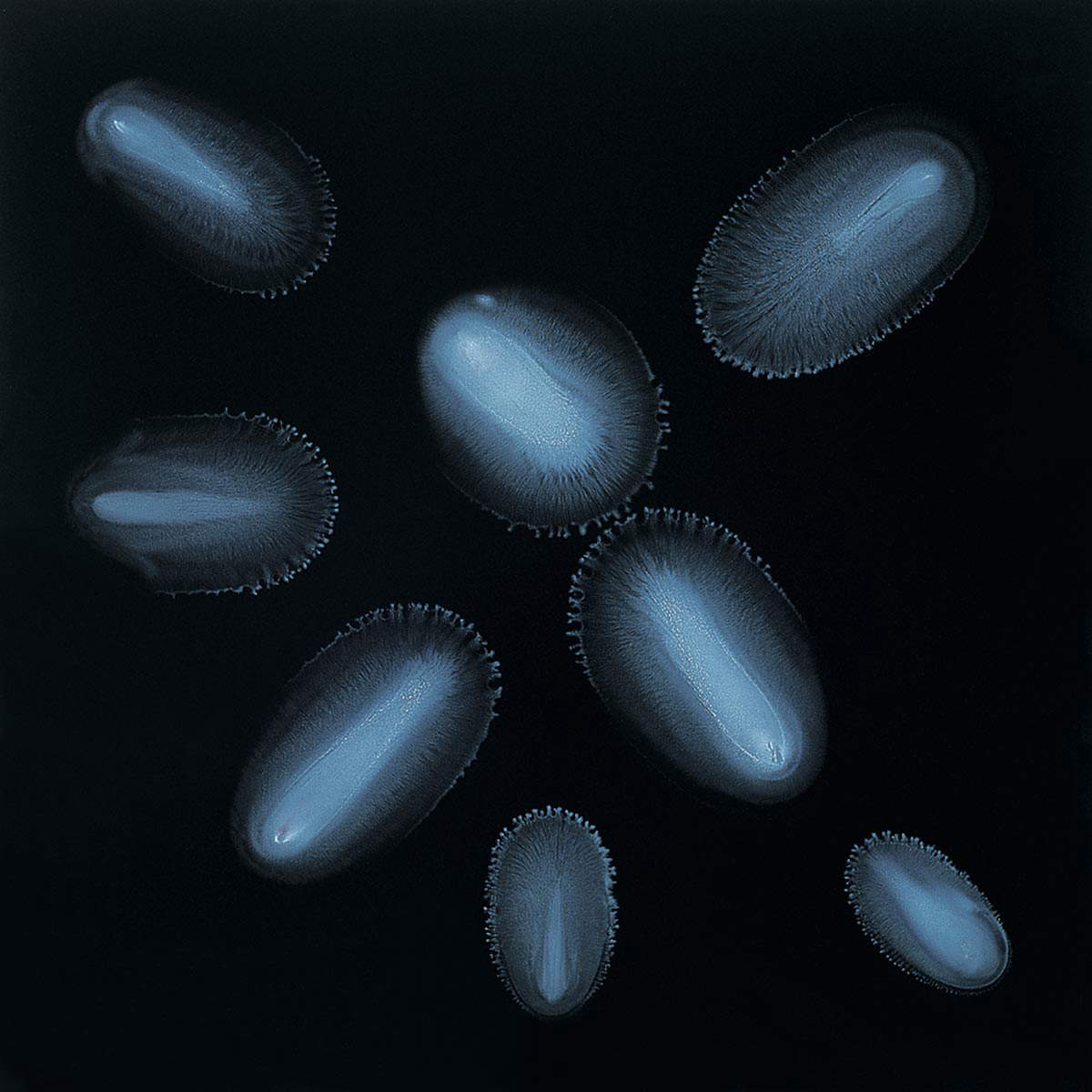
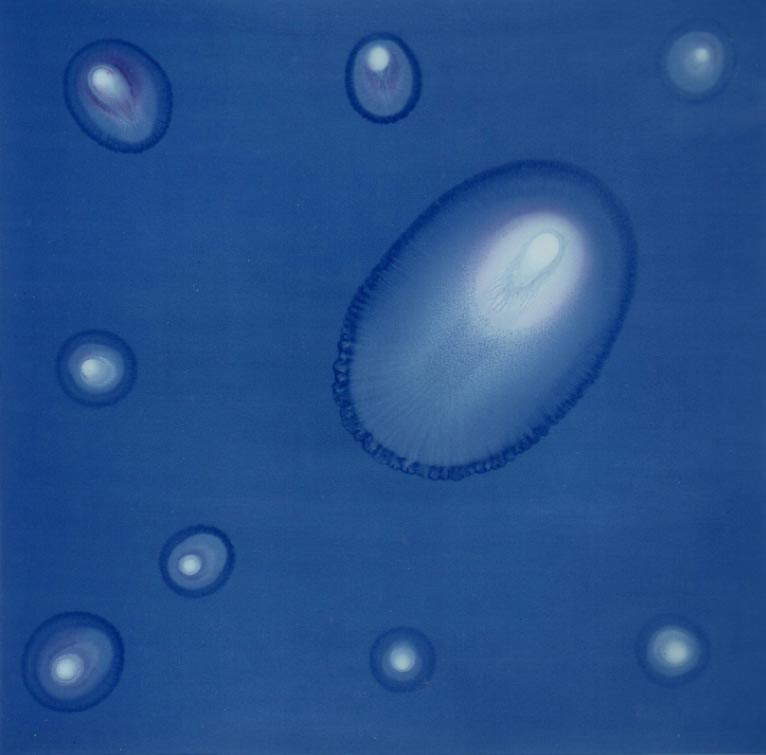
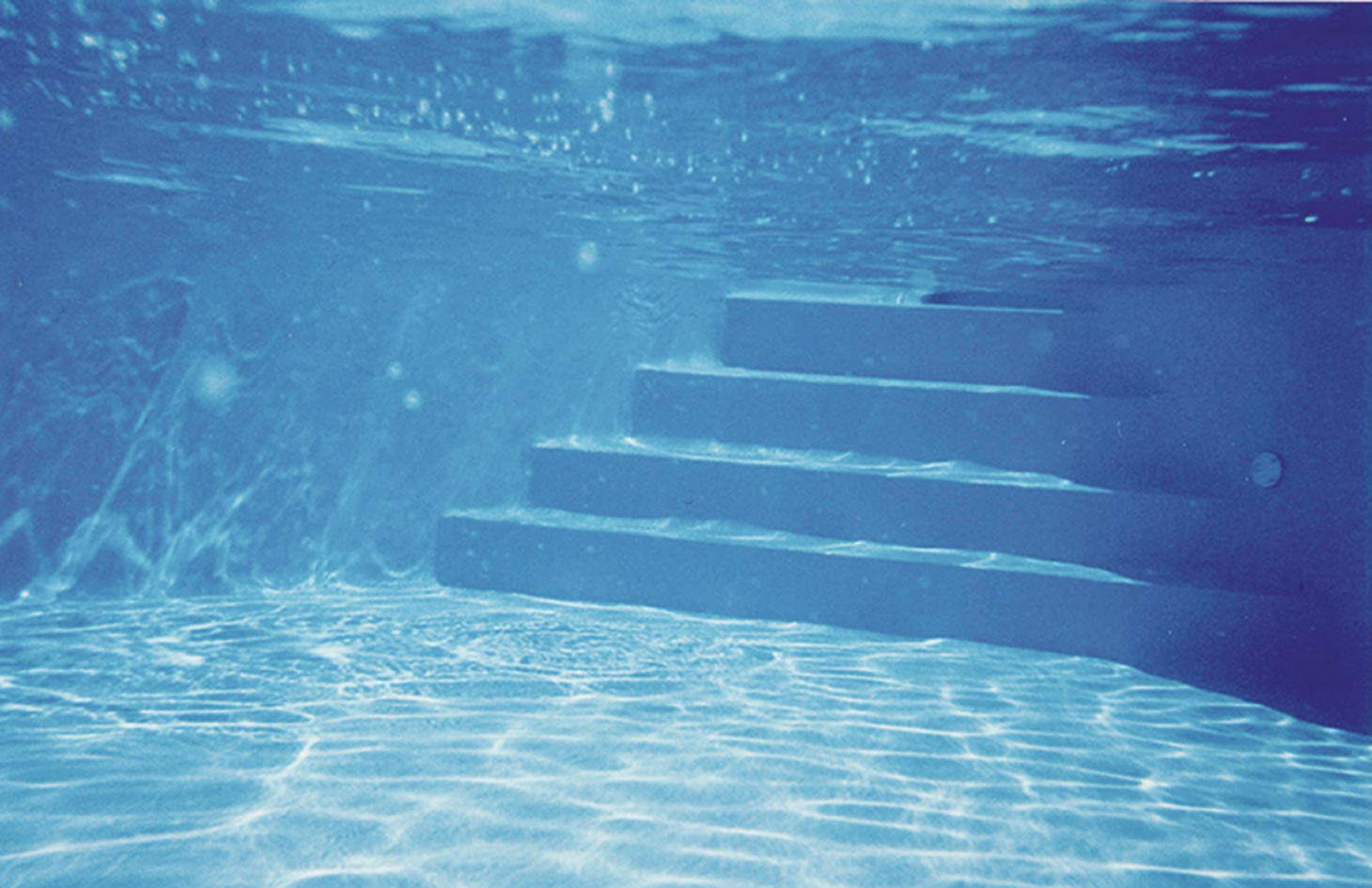 Letizia Galli,
Letizia Galli,
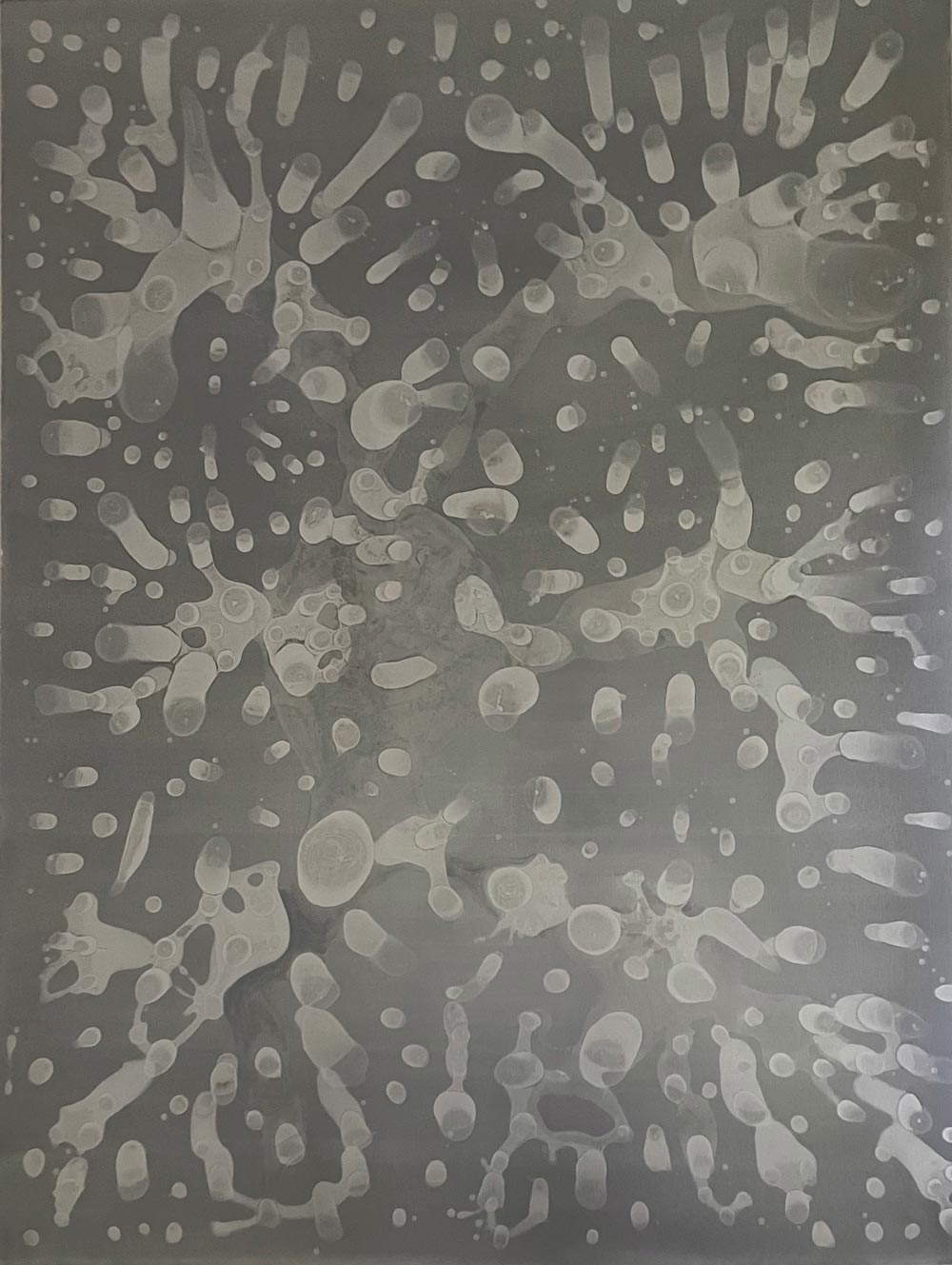
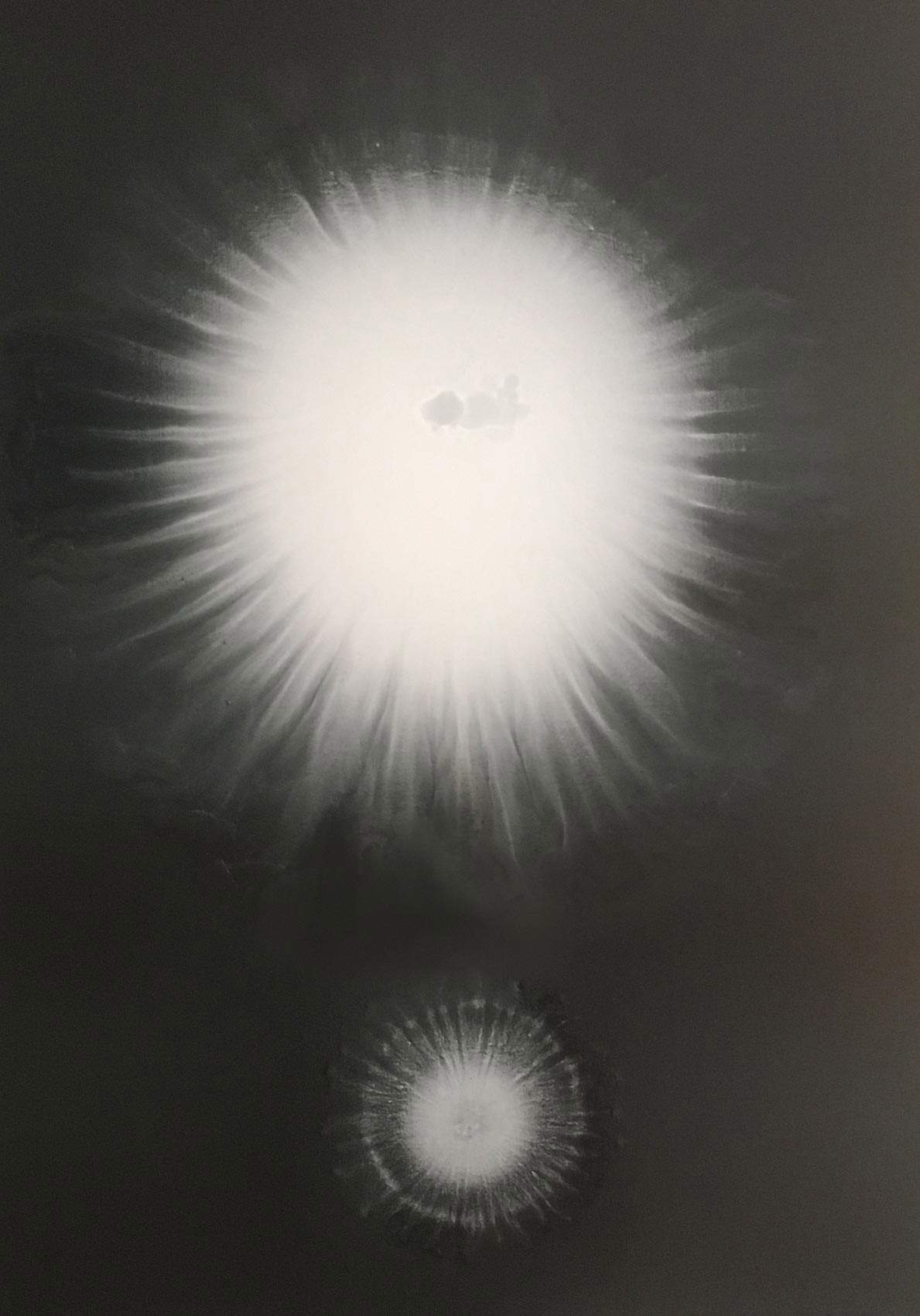
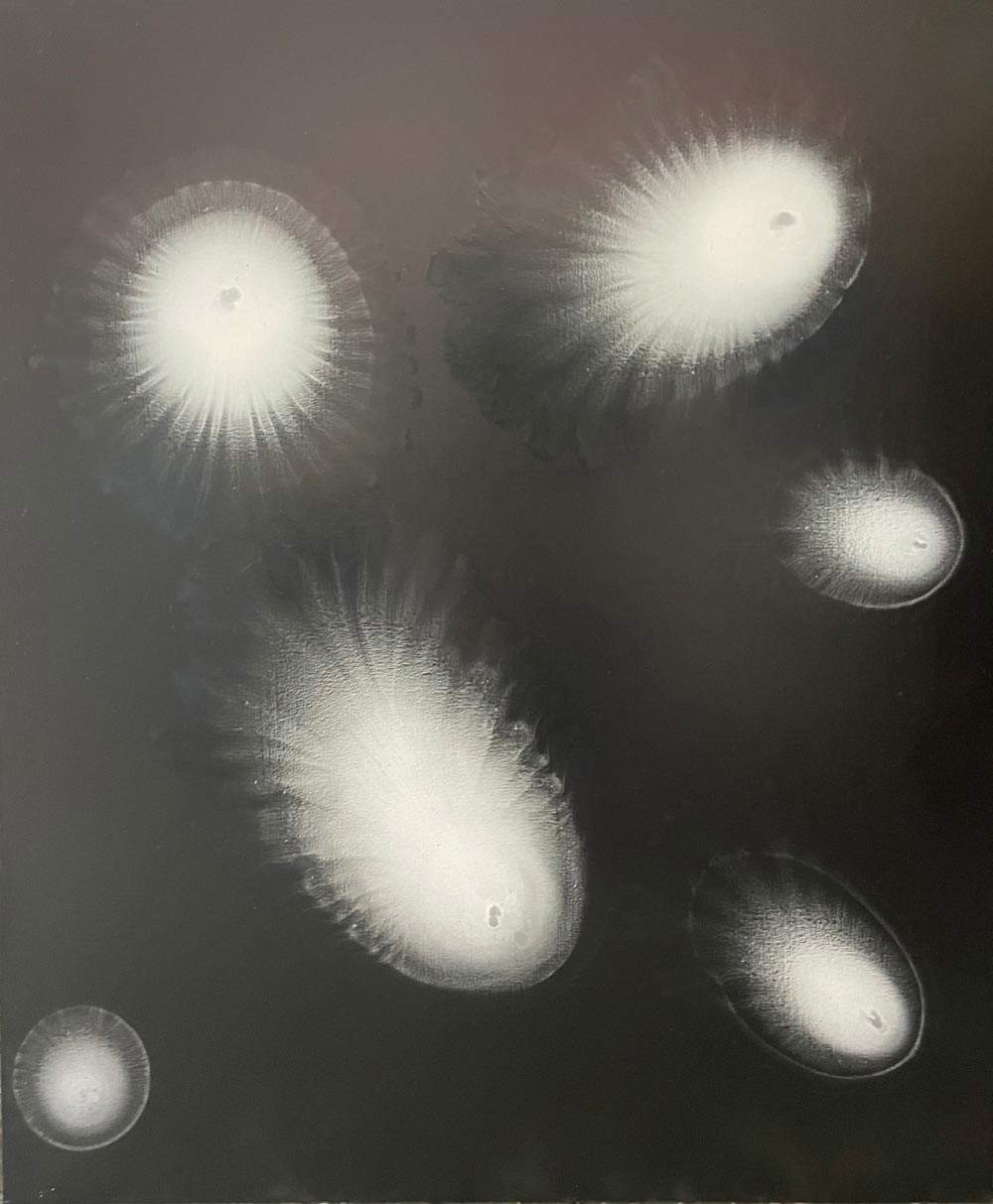
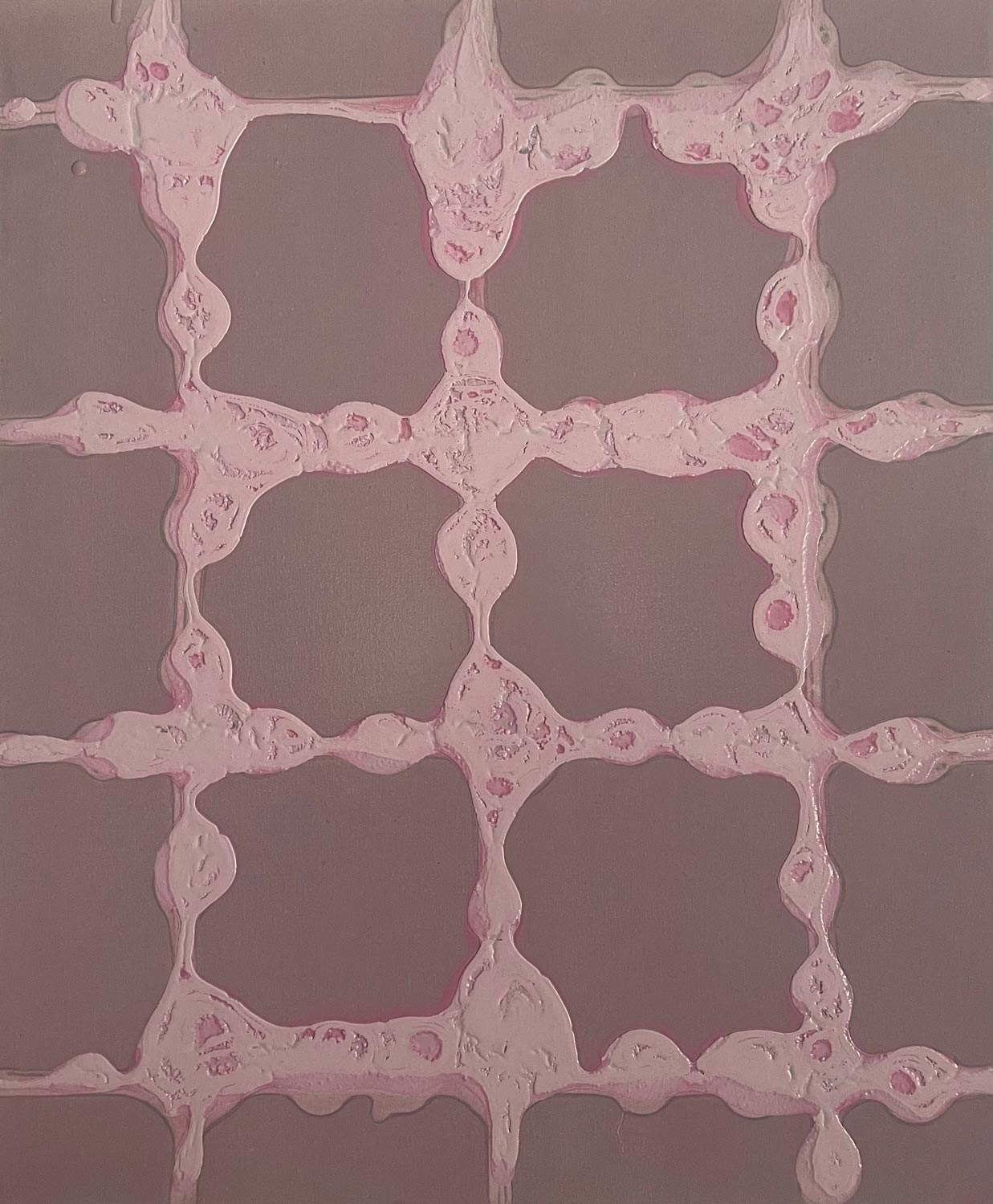

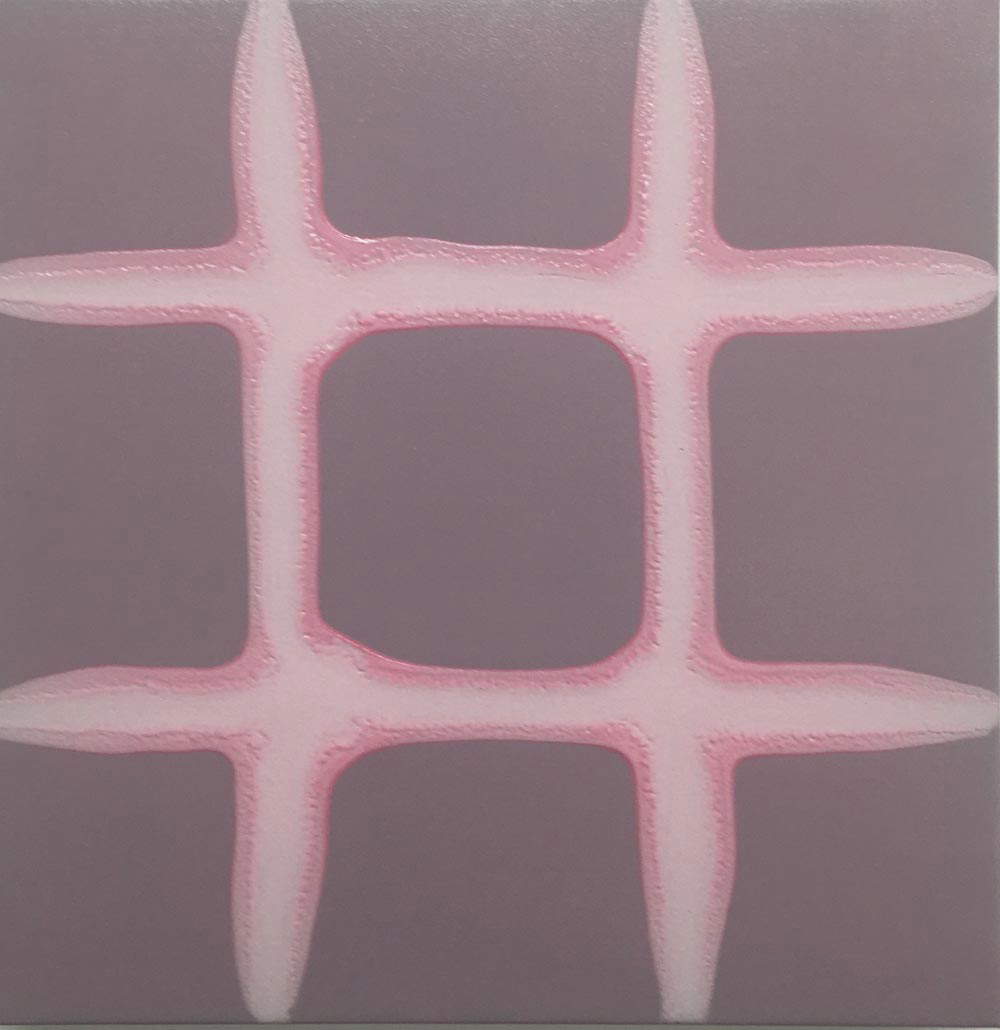

Can your way of working be likened to so-called process painting?
I would say no except for the concept of trying to intimately understand certain pictorial materials, the interaction between them and with the canvas with the effect of gravity and time. However, I diverge from Process Art because the process is not particularly evident and is not the ultimate goal of the work. I hope that the work is open to other meanings apart from process, that it goes beyond it. Having been trained in England, my painting is of the English 1980s-1990s style, my thesis was an interview with Giuseppe Panza di Biumo on the subject of abstract painting. I identify more with painters who, instead of painting traditionally with a brush, drip, drip, make the pictorial media move by gravity or who make their own particular tools for painting. If there is gestural in my work, it is not expressionist at all, it is not Action like Pollock, it is a dropper-controlled gestural like a chemical experiment, I have a procedural approach to work. To name a few I think of painters like Nicky May, Callum Innes, Ian Davenport, Ross Bleckner, Jason Martin, Bernard Frize, and later Alexis Harding, and earlier with abstract expressionists like Helen Frankenthaler and Morris Louis. Although they were painted in the traditional way, I liked so much the early work of Larry Poons, an American painter of the 1960s-Seventies, that when everybody was doing lines, he was doing “dots,” little rounds. I also do rounds, he painted them with a brush so they were static, I paint them by pouring material, so they are dynamic.
How important is color in all this?
The way I work is rather cerebral, cognitive, whereas it is with the choice of color that my emotional and spiritual part comes out. I use color very intuitively and with the mood, the mood of the moment or the period. Apart from a few excursions with pinks, in general the two colors I have continued to use for decades are black and light blue. I think black reflects a more introspective and suffering side of my personality and light blue the more positive and eager side of serenity. I am very attracted to black backgrounds from which lights and shapes emerge, I like night landscapes with city lights, I remember in 1999 I had a solo show at Marabini Gallery of all black paintings. In the series of green paintings in (2014 I was inspired by the greenish colors of early computers. I also used blue a lot because of the therapeutic value of this color associated with clear skies, clear water (for example, the Therapeutic Blue series of 1996 and the swimming pools of (2002). Now I am back to using blue in paintings because at the moment I need lightness but at the same time I see that I always return to black. I hear a lot of bad news all the time about wars, climate disasters, feminicides and deaths at work. I see a lot of people close to me who are having economic difficulties, or who are sick or missed. The international ( non-mainstream) channels I follow outline stressful scenarios of a dystopian future (not so much future) where there will be more and more controls and restrictions on our freedoms, even more poverty for 99 percent of the population, increasingly toxic foods, and technology that, if not regulated in time, will only harm us. I realize that when I paint I can temporarily tune in to a very particular channel that reduces my anxiety about living in a world where there is so much evil, intolerance, greed, insanity, corruption and injustice. The same happens to me when I see a work of art that I like. It is a channel where I find originality, intelligence, awe, wonder, mystery, commotion, peace. I aspire to and appreciate beauty: not that of decoration but that of originality, intelligence, empathy, ethics.
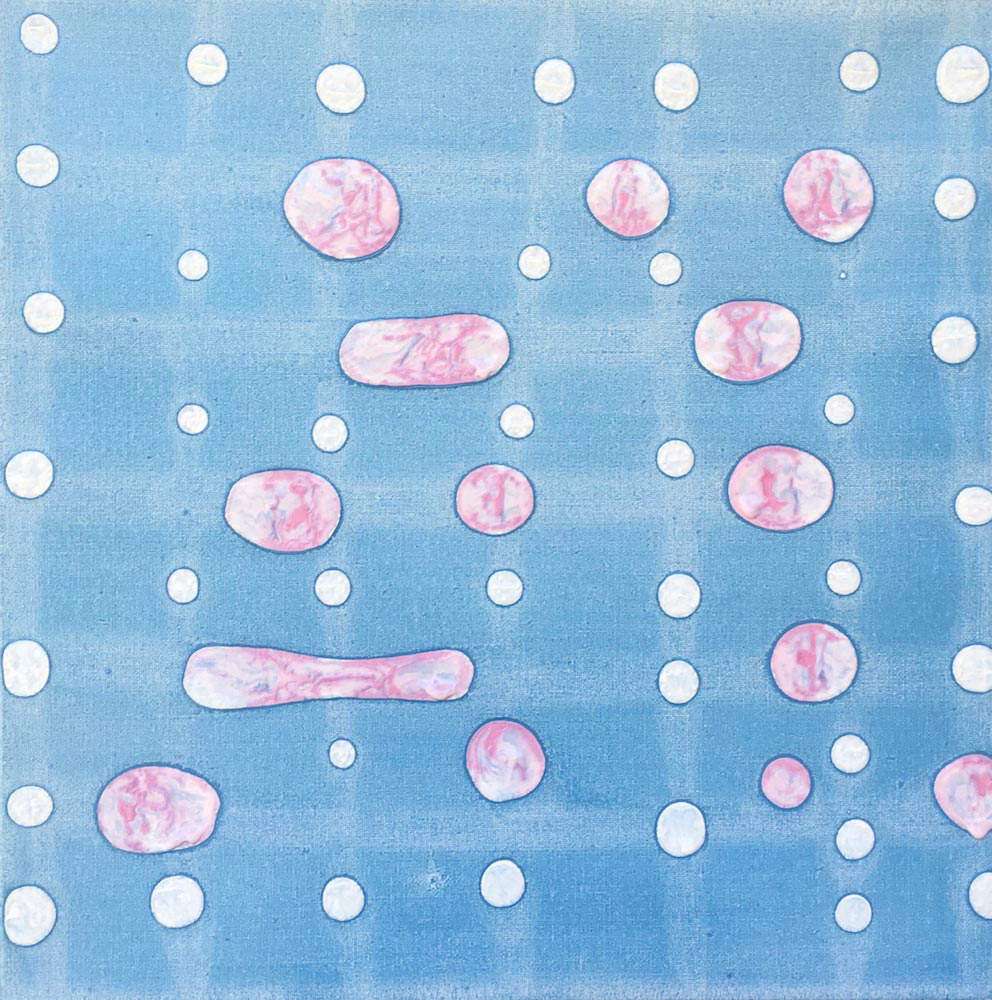
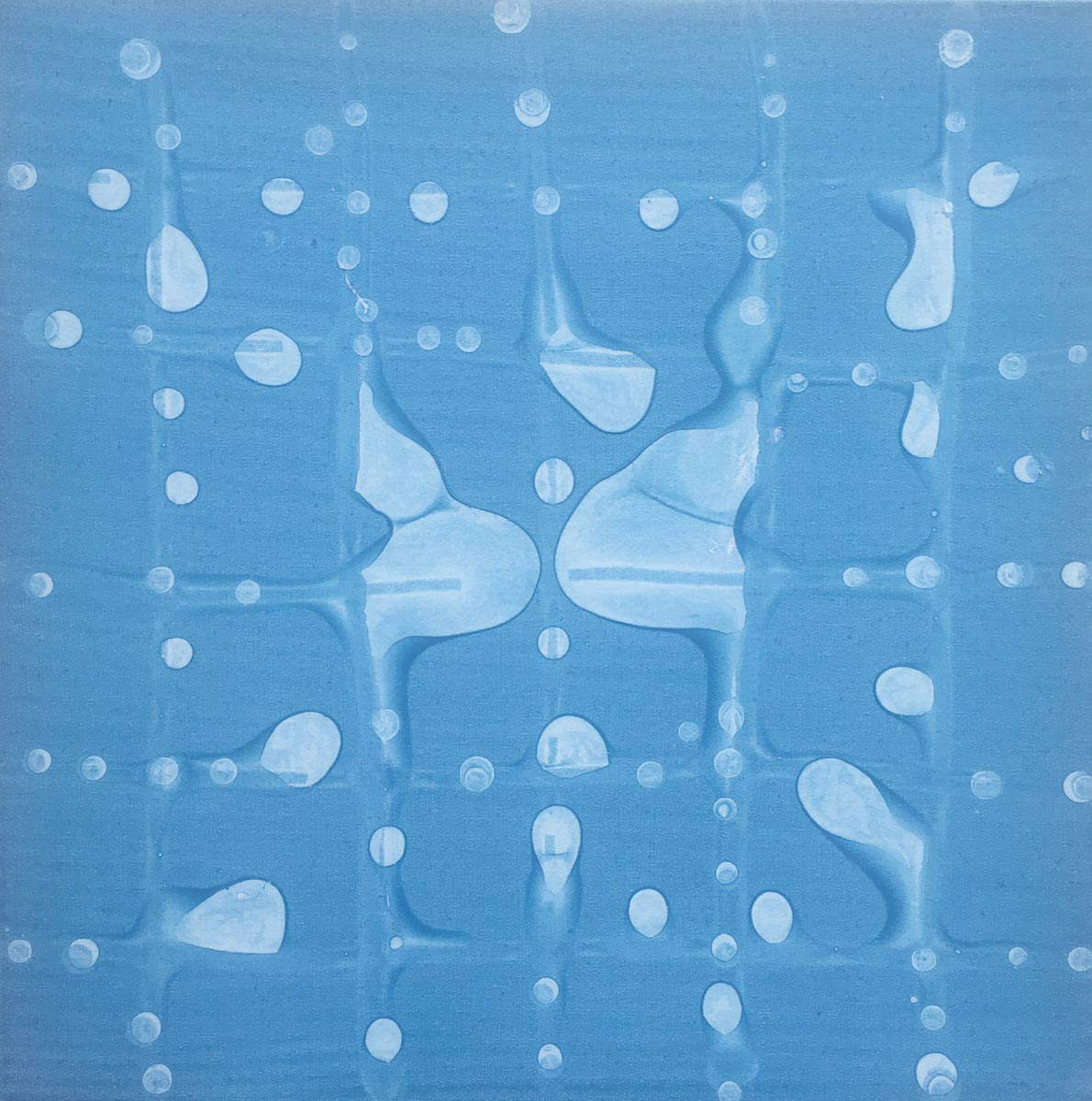

Can you tell me about your binary sculptures?
When I was in college in London in the 1990s, presenting a binary tree, I had been a finalist in a call for a large-scale sculpture for a large telecommunications company. I had also done other work informed by the concept of the binary tree, this graph that has the property of bifurcating and growing exponentially. Then about ten years ago a collector of mine prompted me to take up the binary tree concept again, and since then I have produced many three-dimensional and two-dimensional trees of various sizes and levels of complexity. The three-dimensional sculpture starts from a sheet of iron that is laser cut according to a binary logic and then undergoes about 5/6 processes by various Tuscan companies. In the case of other thinner and more ductile materials the bending process is done by me and not by machine. In contrast to the painting work that I do in complete isolation, the sculpture production chain is a team effort and it is a great pleasure for me to interact with these very good Tuscan specialists from whom I learn many interesting things and with whom I have established, after the initial mistrust, a relationship of mutual sympathy and esteem. The binary tree can be seen as the tree of life and as an icon of Computer Science. The binary tree also has an ethical significance, which is the most important aspect for me. In fact, it can be associated with the interdependence of phenomena and the non-existence of chance in Nature. Although reality appears random or chaotic to us, I like to believe that everything is interconnected and that everything that happens to us stems from causes and conditions. If this were true as I believe, we would have an even stronger moral responsibility because every choice we make, every action we take would have an impact and consequences on ourselves, others and the environment. I am very interested now in being able to do temporary site-specific interventions by making binary ramifications. The one in Bientina was made with spacing tapes during the pandemic outside the shed where I was having my sculptures chromed. This installation had a political value of dissent against the restrictions that I and many others were feeling at that particular moment in history. In the last few years between pandemics, lockdowns, little mobility, and prohibitive increases in materials and processing, I no longer produced sculptures but devoted myself to painting, my great love for as long as I can remember.
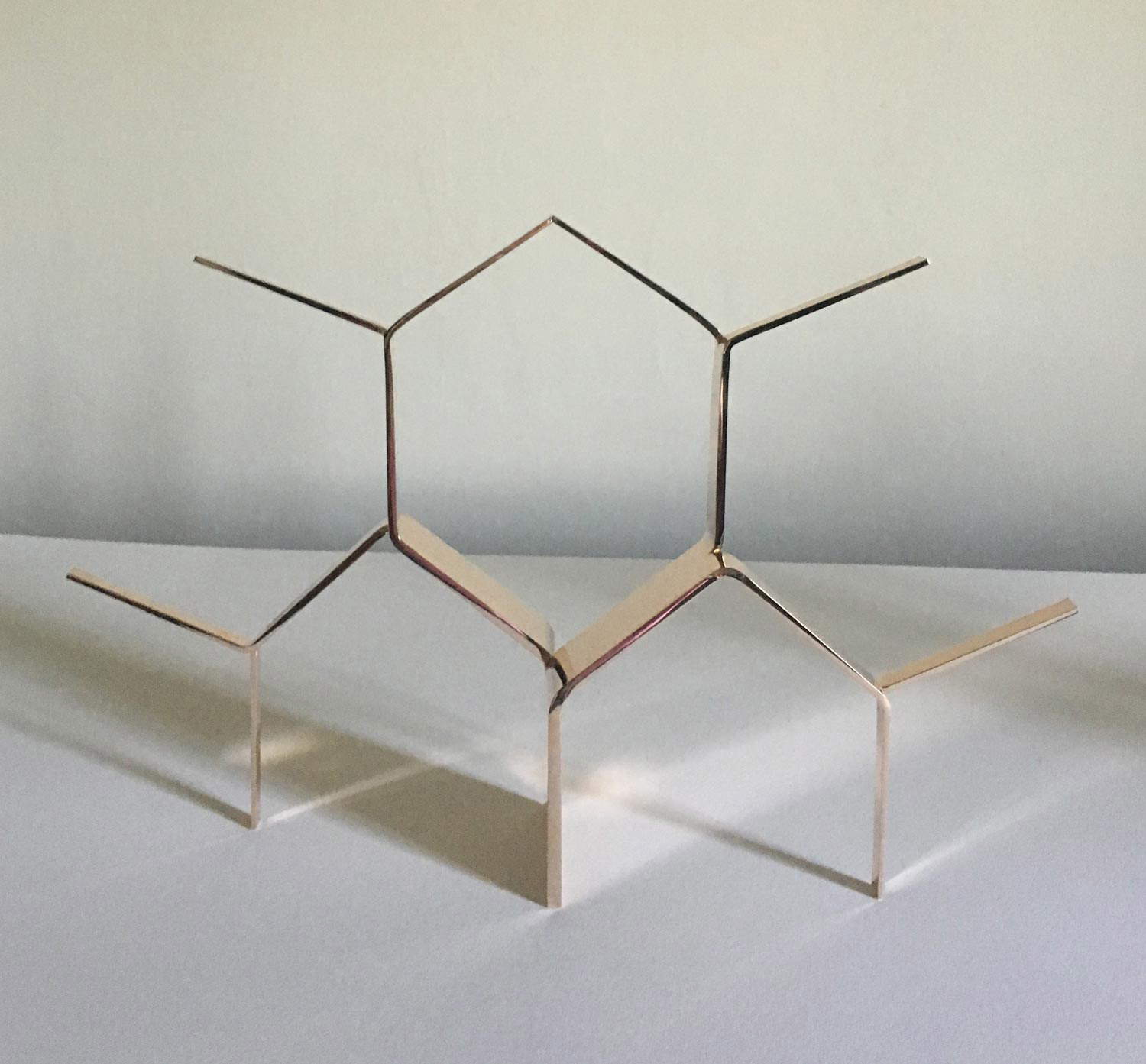
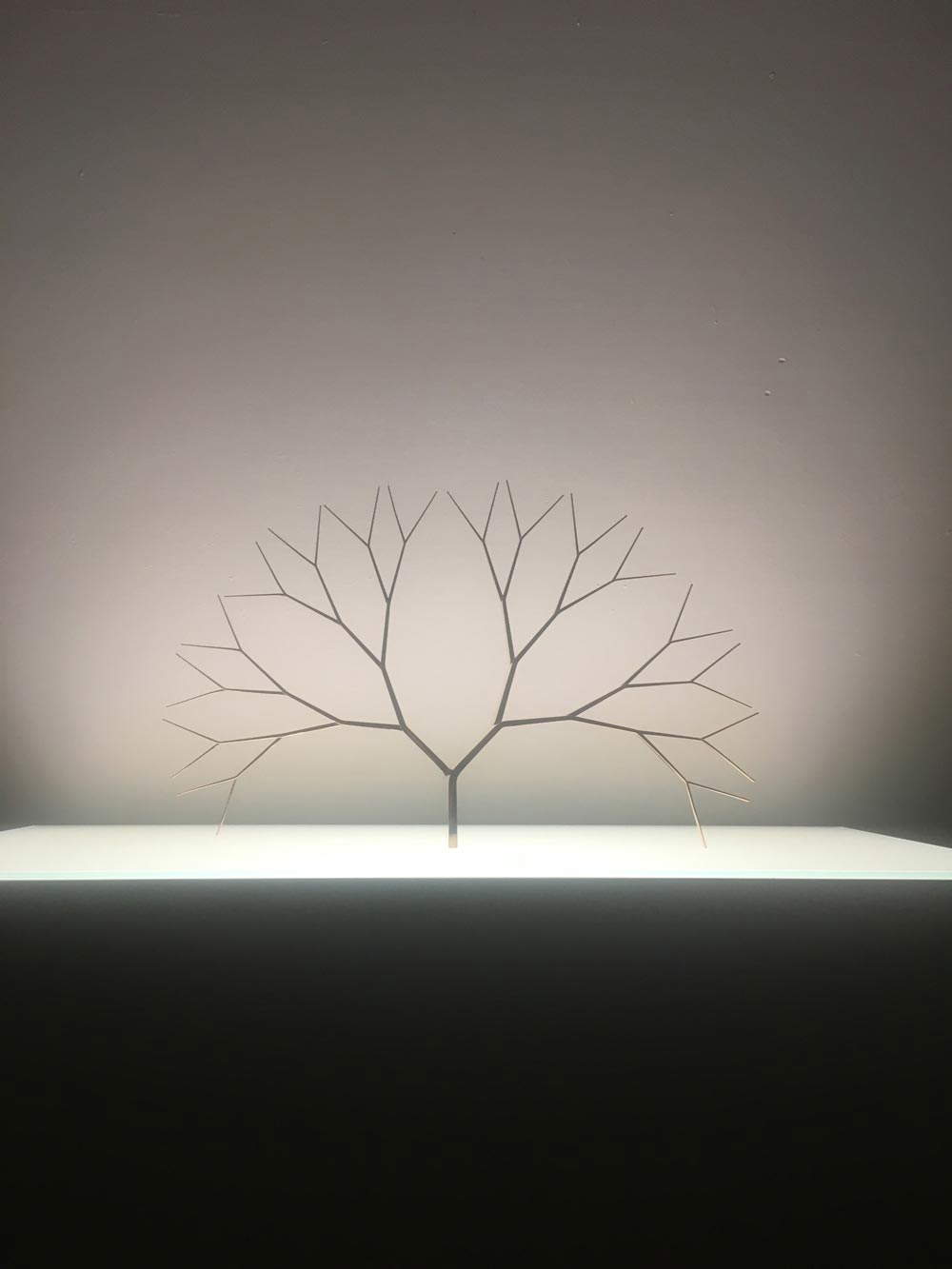


 Letizia Galli
Letizia Galli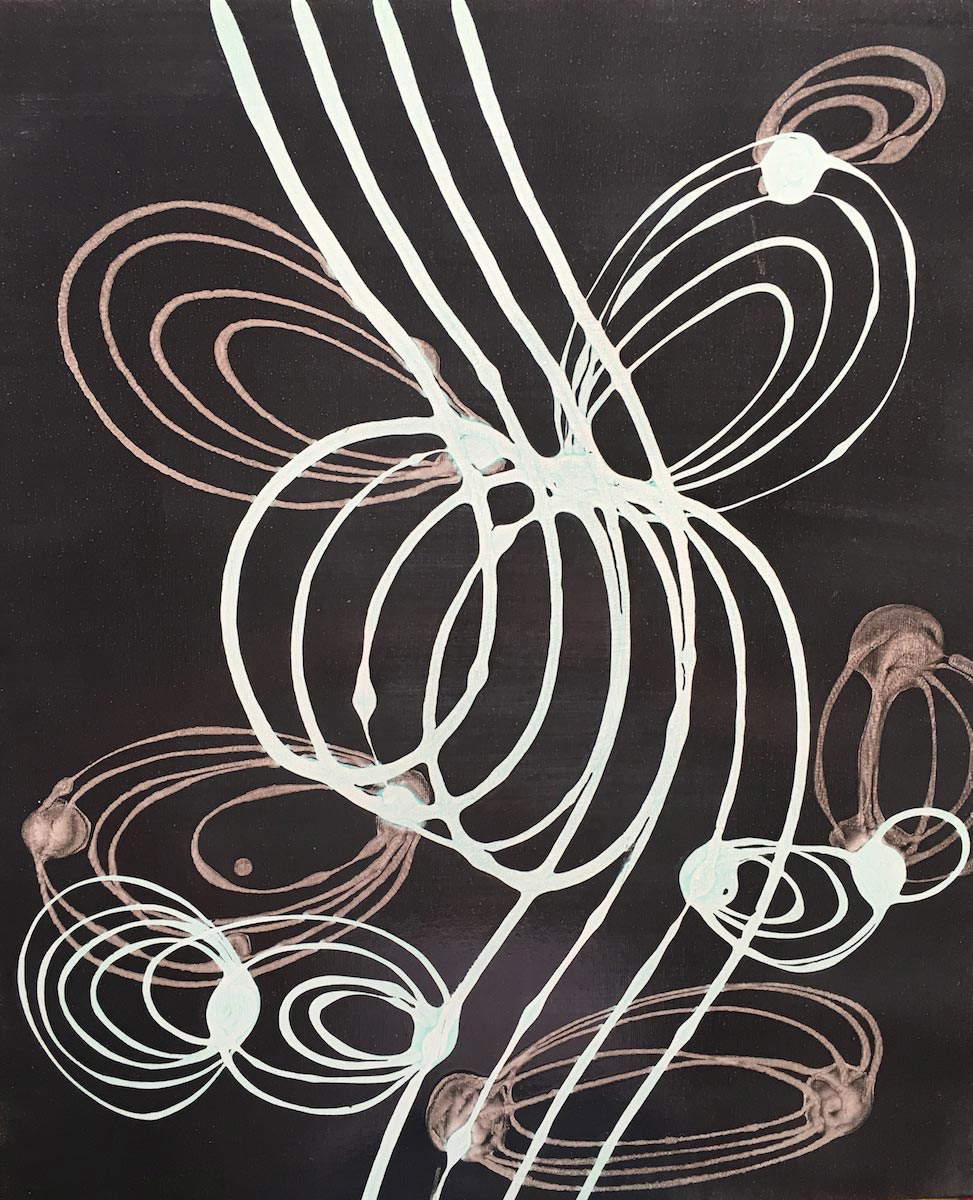
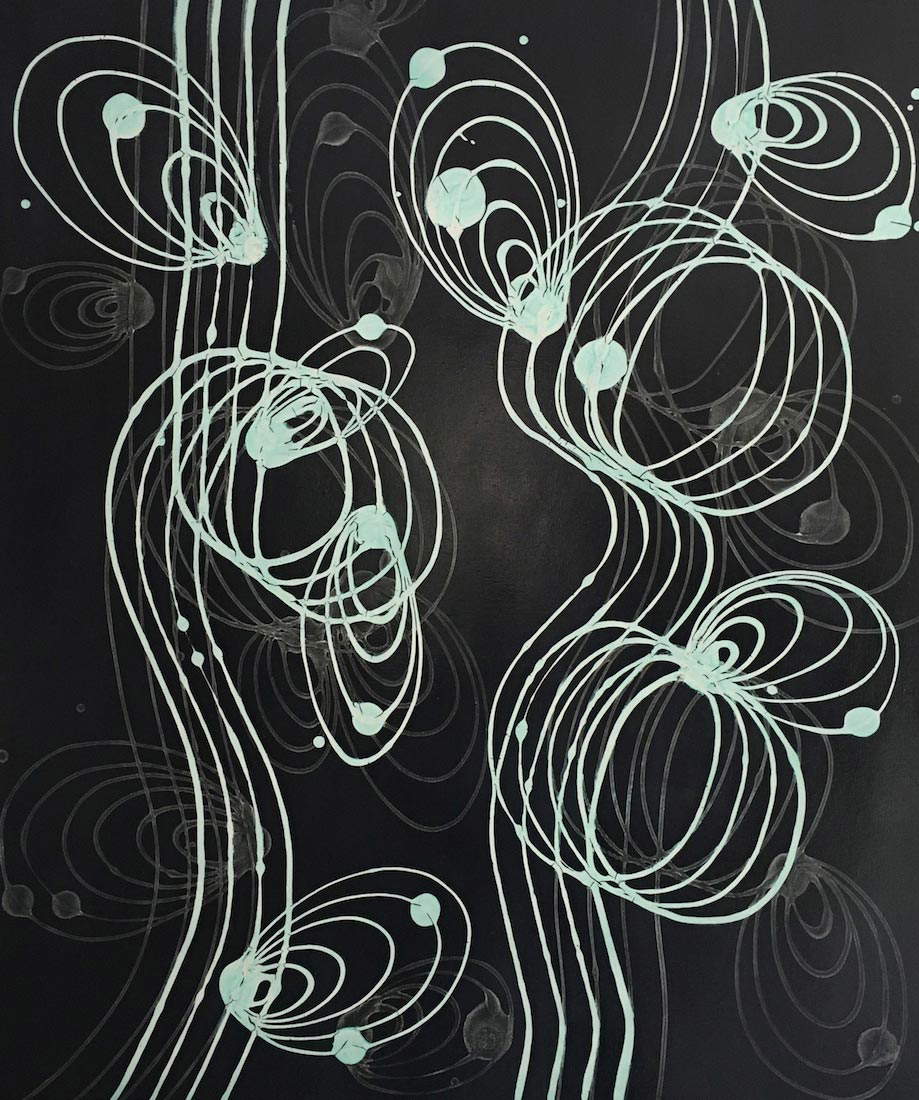


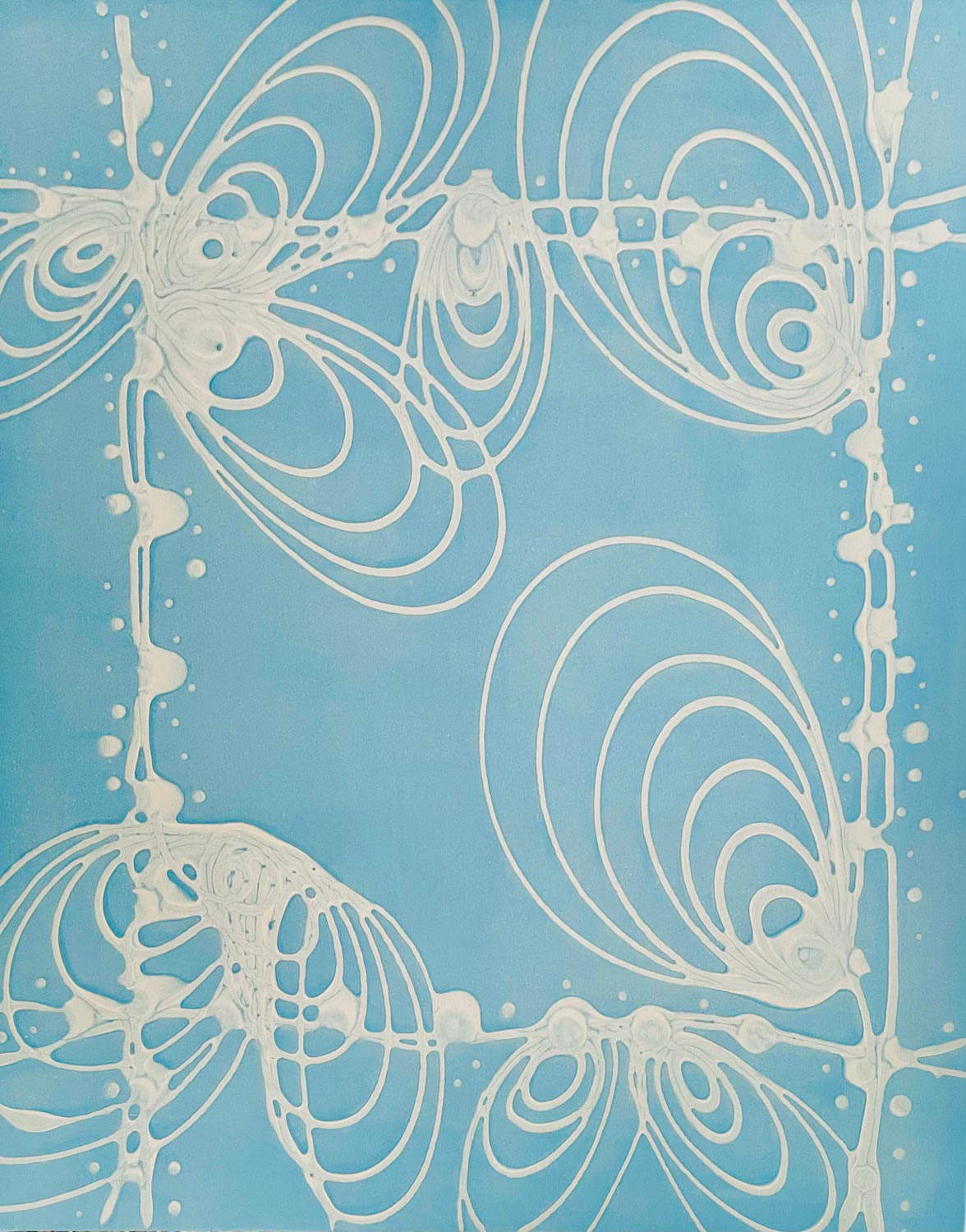

Going back to painting, what are you doing now?
Right now in painting I am doing grids with spirals, which at the moment are very attractive to me both because they are fractals present Nature (because Nature is fractal) and because I associate them with algorithms. However, I must specify that although I started from these inputs, as I go on with the work I find that it does not matter to me where I started from. Each new work provides information to the following one and in this creative concatenation you lose any meaning, any representation, any reference but you go inside a mysterious place, inside a retinal language that there is no point in trying to express it verbally or justify it conceptually: it is painting. The (2022 I spent in tribulation: in the previous two years I had done many small works 40 by 40 cm or (50 by 70 cm at most) that were fine I was satisfied. However, when I tried to expand to larger formats, everything I was doing in the small no longer worked either from a technical or compositional point of view. They were works that couldn’t have an impact at a distance, it’s crazy how size affects my kind of research, how everything changes in the big. So I spent a year doing a lot of work that I wasn’t satisfied with and discarding, spending a lot of money, time and energy and just getting a lot of frustration. I was learning what I was not supposed to do but not what I was supposed to do, but that is also part of the learning process. Then, slowly with patience, from the beginning of this year I started to see the fruits of the work of the previous years. And so it seems to me that an interesting path of research has opened up for me to travel.
Warning: the translation into English of the original Italian article was created using automatic tools. We undertake to review all articles, but we do not guarantee the total absence of inaccuracies in the translation due to the program. You can find the original by clicking on the ITA button. If you find any mistake,please contact us.